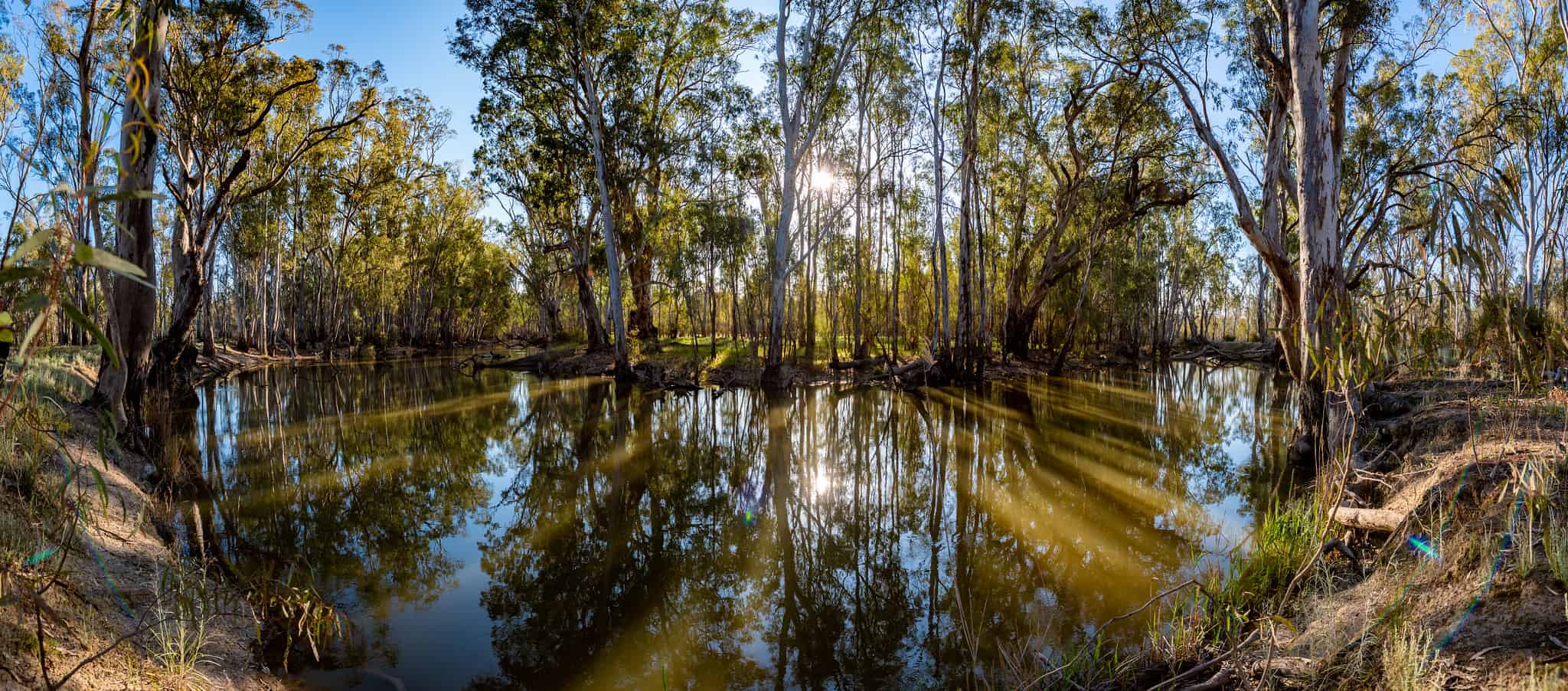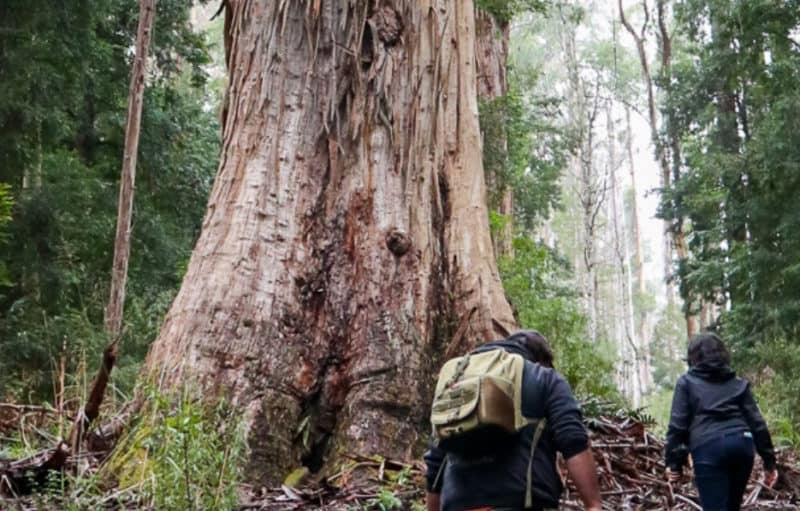National Reconciliation Week: 27 May – 3 June 2021
The year 2021 marks twenty years of Reconciliation Australia and almost three decades of Australia’s formal reconciliation process. The theme for 2021 = More than a word. Reconciliation takes action, urges the reconciliation movement towards braver and more impactful action.
Reconciliation is a journey for all Australians – as individuals, families, communities, organisations and importantly as a nation. At the heart of this journey are relationships between the broader Australian community and Aboriginal and Torres Strait Islander peoples – Reconciliation Australia.
What can nature-lovers do?
Sometimes it’s not easy to know what to do. But we need to do something. The commitment to learn from, listen to and integrate Indigenous wisdom in how we move forward with our work to care for nature is ongoing.
Recognising and advocating Joint Management of our parks estate is one of the ways VNPA strives to support and strengthen the relationship between the broader Victorian community and Aboriginal peoples.
There are many ways in which you can acknowledge, support and take action for honoring Aboriginal People’s continuing connection to nature.
- Knowing whose lands or waters you live or work on, or when you visit a park, can help you to acknowledge the Traditional Custodians of the area: the local Council website for the area in which you live or visit, as it should have this information readily available.
- Take a safe or brave action: The theme of 2021 urges us all to take action for reconciliation. Visit the Reconciliation Australia website to find out some of the many actions you can take.
- Visit one of Victoria’s jointly managed National Parks: Learn about the Traditional Owners and their connection to country. Spend time listening to and learning the stories of their culture – the wildlife, the plants and the landscape.
See the list of Jointly Managed Parks below, but firstly:
What is Joint Management?
Joint management is a legal agreement between the state and Traditional Owners. Each agreement is tailor-made to reflect the aspirations of the Traditional Owner agreement partner. In Victoria, joint management is primarily established through agreements under the Traditional Owner Settlement Act 2010.
The Act recognises the ongoing connection of Traditional Owners to their traditional Country, and empowers them, in partnership with the Victorian Government, to actively participate in the management of land and natural resources within their traditional Country.
In most cases, Joint Management applies to land that has been handed back to Traditional Owners as Aboriginal Title. Joint management arrangements are currently in place with four Traditional Owner groups across Victoria, with others under negotiation.
Source: Parks Victoria
It’s our duty as Traditional Owners to be out on country, caring for country
– Corey Walker, Member, Yorta Yorta TO Land Management Board
Don’t know where to begin? Here are four incredible jointly-managed National Parks

Budj Bim, Gunditjmara Country
The Budj Bim Cultural Landscape, located in the traditional land of the Gunditjmara in western Victoria, is the only Australian World Heritage site to have been listed entirely for its Aboriginal cultural associations.
The site was created around 6,600 years ago, when the Gunditjmara people developed a permanent settlement on volcanic lava flows and associated wetlands. The area, covering about 10,000 hectares, contains the remains of around 300 round stone huts and one of the world’s most extensive and oldest aquaculture systems.
The Budj Bim Cultural Landscape contains extensive evidence of stone house villages situated on numerous wetlands. These wetlands, such as Lake Condah, Condah Swamp, Gorrie Swamp and Homerton Swamp were formed when the Budj Bim lava flow blocked the natural drainage patterns of the water in the region.
It is older than Stonehenge and has recently been listed as a UNESCO World Heritage Area.
Tarra-Bulga, Brataualung Country
Tarra-Bulga National Park on Brataualung Country, is highly significant to Gunaikurnai Traditional Owners due to its remarkable Aboriginal cultural heritage.
Known for its giant Mountain Ash trees, beautiful fern gullies and ancient myrtle beeches, Tarra Bulga in South Gippsland has some of the best examples of original cool temperate rainforests of the Strzelecki Ranges.
Tarra-Bulga National Park is one of the jointly managed parks within Gippsland.
Raymond Island, Gippsland Lakes Reserve, Gunaikurnai Country
The waters of the island remain important to Gunaikurnai for fishing, collecting mussels, catching eels, hunting animals, collecting swan eggs, and gathering various plants for food and medicine.
Raymond Island Gippsland Lakes Reserve, situated on Raymond Island, is one of the jointly managed parks within Gippsland.
Barmah National Park, Yorta Yorta Country
Barmah National Park and the adjacent Murray Valley National Park in New South Wales protect the largest River Red Gum forest in Australia. Barmah National Park is an exceptionally diverse environment with records of more than 420 indigenous plant species and more than 300 native animal species.
The Yorta Yorta People have joint management arrangements in place for Barmah National Park, although this park has not presently transferred to Aboriginal Title. The Yorta Yorta Traditional Owner Land Management Board and Parks Victoria have released a Joint Management Plan (PDF) for Barmah National Park.
From this plan are some examples of Yorta Yorta words:
- Biyala = River Red Gum
- Dhungalla = Big Water — the Murray River
- Gurranyin = eagle
- Walla = water
- Woka = land
- Wuta yapaneyepuk = all together
- Yenbenon = our people
- Yenbena = a Yorta Yorta person
We don’t set the conditions for life, Mother Earth sets them only that we can survive. Before white man came we were millionaires, we never wanted for anything, everything was free, down to the clear air we breathed, no pollution and clean water, plenty of birds, plant life and animal life
— Yorta Yorta Elder, Elizabeth Morgan 1927–2009
List of Victoria’s jointly managed national parks and reserves to date
Gunaikurnai Recognition and Settlement Agreement 2010
- Buchan Caves Reserve
- Corringle Foreshore Reserve (within Marlo Coastal Reserve)
- Gippsland Lakes Coastal Park
- Gippsland Lakes Reserve on Raymond Island
- Lake Tyers State Park
- Mitchell River National Park
- New Guinea Cave II (within Snowy River National Park)
- Tarra Bulga National Park
- The Knob Reserve (jointly managed with the Department of Environment, Land, Water and Planning)
- The Lakes National Park
Dja Dja Wurrung Recognition and Settlement Agreement 2013
- Greater Bendigo National Park
- Hepburn Regional Park
- Kara Kara National Park (Part)
- Kooyoora State Park
- Paddys Ranges State Park
- Wehla Nature Conservation Reserve
Taungurung Recognition and Settlement Agreement 2018
- Alpine National Park (Part)
- Cathedral Range State Park
- Heathcote-Graytown National Park (Part)
- Kinglake National Park (Part)
- Lake Eildon National Park
- Mount Buffalo National Park
- Mount Samaria State Park
- Mount Wombat-Garden Range Flora and Fauna Reserve
- Wandong Regional Park
Yorta Yorta Traditional Owner Land Management Agreement 2010
- Barmah National Park
The Victorian National Parks Association acknowledges the many First Peoples of the area now known as Victoria and honours their continuing connection to, and caring for, Country. We support Traditional Owner co-management of parks and public land.
Photograph: Barmah National Park | Peter | Flickr
